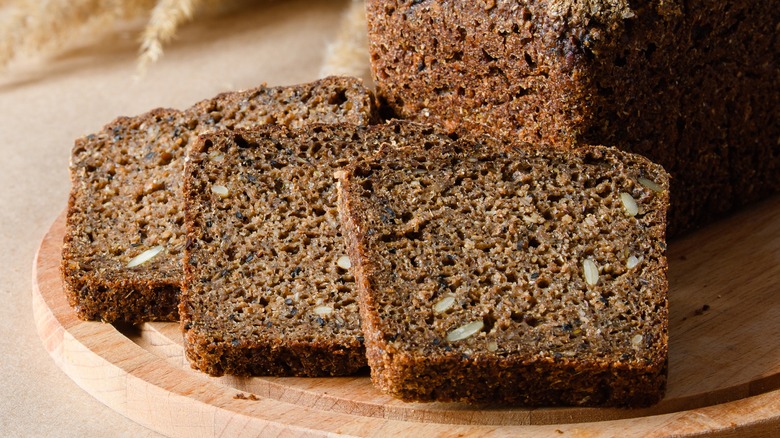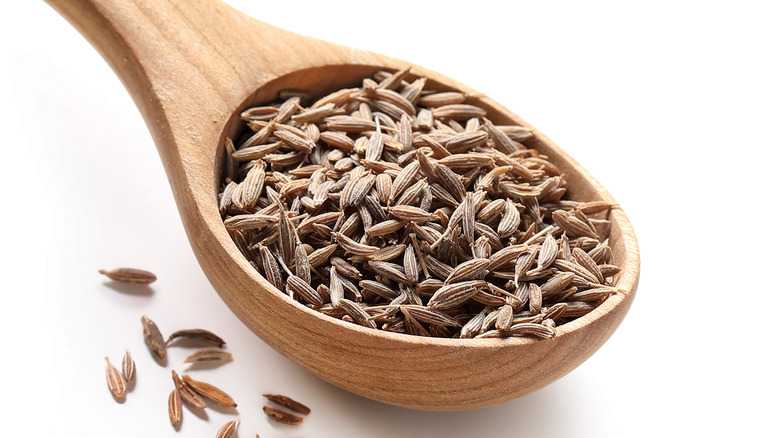The Key Ingredient That Gives Rye Bread Its Unique Flavor
Certain combinations are so tightly connected that it would be inconceivable to think of one without the other. Cookies and milk, peanut butter and jelly, pastrami and rye, it's all the same. Trying to imagine a reuben or a pastrami sandwich without rye bread is a difficult task for any foodie's mind. Still, we have to ask ourselves what exactly makes rye bread taste the way it does because taste and texture are important when pairing anything together.
Rye bread has seen something of a rejuvenation over the last few years. According to The New York Times, numerous bakeries and restaurants across the United States, aided by farmers from Maine to Minnesota, are contributing to the revival of heritage grains. Rye is a simple, historic, and hearty grain to grow. However, it is not correct to say that rye itself is the predominant flavor of rye bread because there are other flavors at play across a variety of rye-based breads. But there is one flavor so indicative of rye bread that it's been mistaken for the flavor of rye itself.
Caraway seeds add depth
We're talking, of course, about caraway seeds. These aromatic little seeds that are a member of the parsley family with a sweet yet tangy flavor (via Spice Advice). They are responsible for the "vibrant, earthy flavor a little like a strong herbal tea," in rye bread, per Thrive Cuisine. Caraway is a very common ingredient in commercially baked rye bread, so much so that it's been misconstrued for the flavor of the actual rye grain, per Zingerman's Bakehouse.
Rye has a flavor profile uniquely its own. Far from the citrusy tang of caraway seeds, King Arthur Baking invites us to think of rye as a combination of earth, malt, and nuts, kind of like an old-fashioned milkshake. In addition to its unique flavor, rye has a chewy texture because of its naturally low gluten content and high moisture retention.
In order to really get an idea of rye's depth of flavor, you need to try a slice of pumpernickel. Pumpernickel is a bread notorious for how long it takes to make, but the result is a deep, darkly rich rye-based bread with an amalgamation of sweet and sour flavors (via German Food Guide). While it's heavier than many other types of rye bread, including rye sourdough, pumpernickel will still give you the most rye for your buck.

